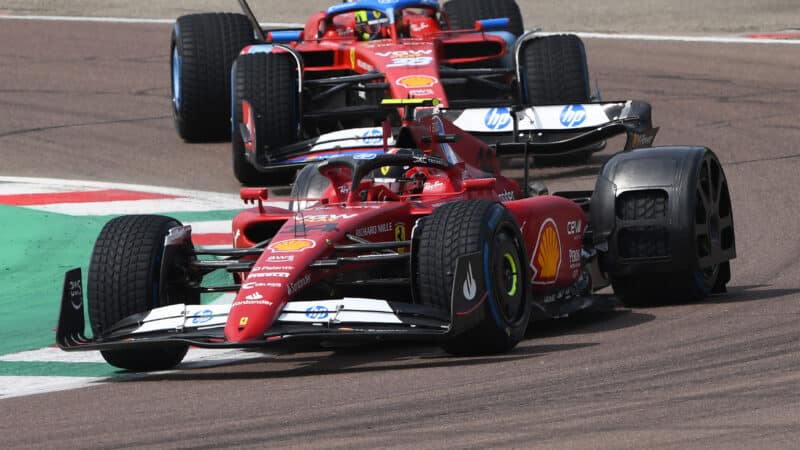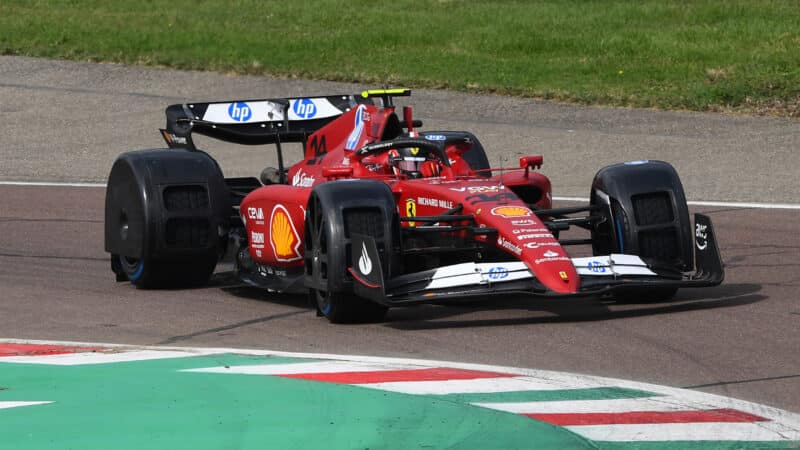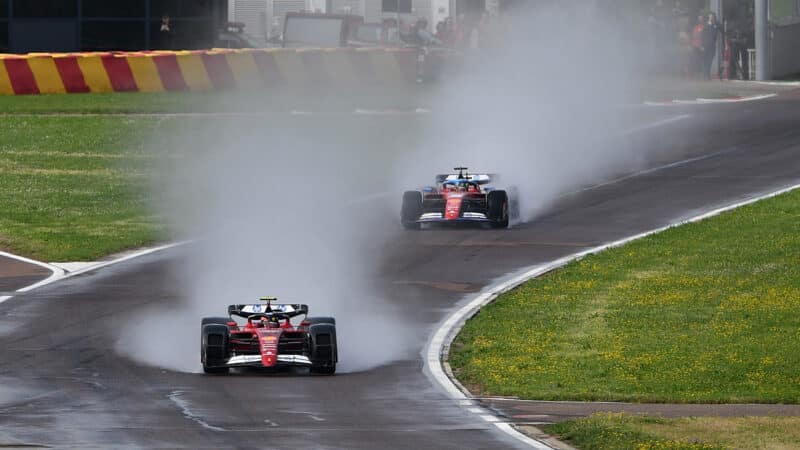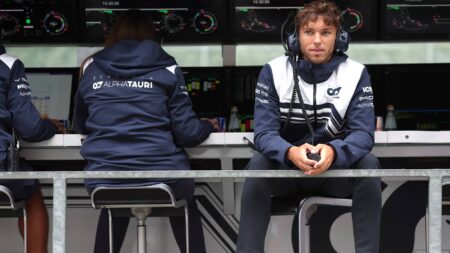Last year’s delays at the Dutch at Belgian Grands Prix came after lengthy stoppages the previous season. Officials were hesitant to run in full wet conditions in 2022, with the Monaco, Singapore and Japanese Grands Prix being delayed due to concerns over spray and the displacement capacity of the Pirelli rain tyres.
“Driver feedback has suggested that there has been reduced visibility in extremely wet conditions with this latest generation of cars, which is a key determinant on starting, or needing to suspend sessions,” said the FIA in a previous statement. “Therefore, the FIA commenced a study to define a package of parts aiming to suppress the spray generated when running in wet conditions.”
An initial concept was shown to the F1 Commission, made up of officials from the FIA and F1, as well as the teams. From there it has been built upon further, with the latest iteration of the concept being shown at Fiorano.

New wheel arches applied just to the rear of Leclerc’s Ferrari
Getty Images
Should the problem continue, Pirelli boss Mario Isola has stated that F1’s tyre provider will shift its efforts into developing a “super-intermediate” tyre which would be more suited to the wet conditions. In the past, drivers have often refused to use the full wet weather blue-striped tyre due to its incredible lack of pace.
“The extreme [wet] tyre is a pretty pointless tyre,” said George Russell. “It’s really, really bad. It’s probably six, seven seconds a lap slower than the intermediate.
“The only reason you’d ever want the extreme wet is because you’re going to aquaplane on an intermediate, so that needs to be substantially improved.
The extreme wet weather tyre also leaves a wall of spray in its wake, as at racing speed it can disperse over 85 litres of water every season — double the amount of the quicker intermediate tyre.
“We still have doubts about what the actual proportion is between the spray due to the tires and that generated by the diffuser,” FIA director Nikolas Tombazis explained ahead of Ferrari’s most recent wheel arch test. “We know that both factors are quite significant, and we are clearly aware that the problem cannot be solved completely.”



